The Sissinghurst White Garden had poetry at its heart from the beginning. Conceived fitfully in the years around the Second World War, its originality and Vita Sackville-West’s growing celebrity as a garden writer quickly propelled it to a position of stratospheric fame and influence.
Discover a white garden in the city
White garden inspiration
It has spawned so many imitations that it is now quite hard to imagine that it was once an entirely original idea. Although many colour-themed gardens sprang up among the disciples of Gertrude Jekyll, no one, before Vita and her husband Harold Nicolson, had attempted an all-white garden. Jekyll used white sparingly, to leaven ‘real’ colours as her painterly eye demanded. But Harold and Vita recognised the dual qualities of ghostliness and freshness that might suffuse an all-white composition and created perhaps the most famous of English garden ‘rooms’.
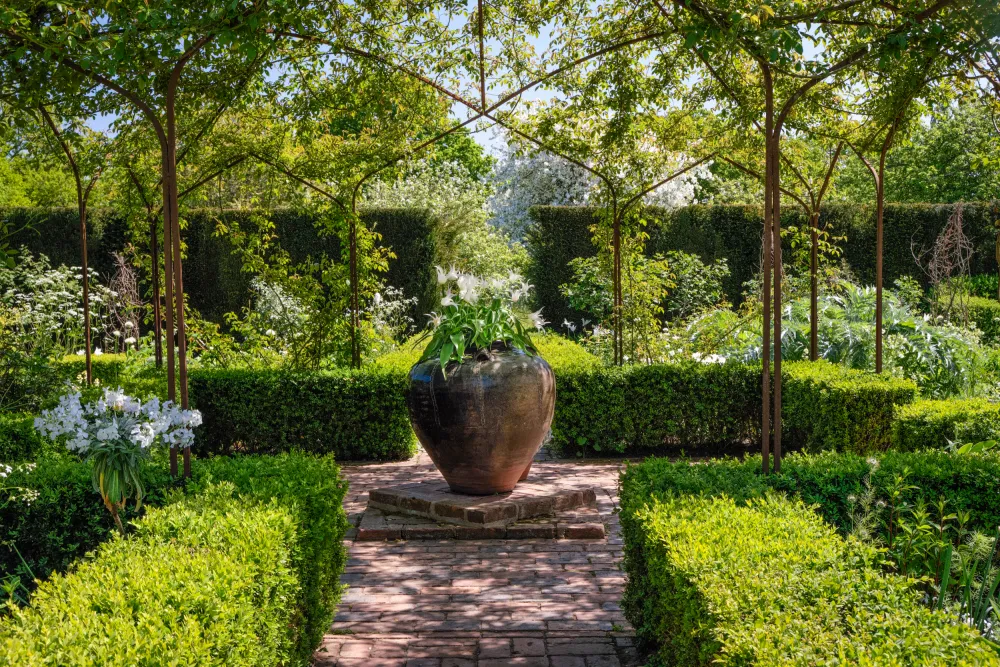
To those of us who might follow them, it would seem a simple matter to create a garden of purely white flowers, enriched by fresh green and ghostly silver foliage. What could be easier than combining white with white? Vita’s initial ambivalence around the naming of the garden hints otherwise. She referred to it initially as her ‘pale garden’ or the grey, green, white and silver garden.
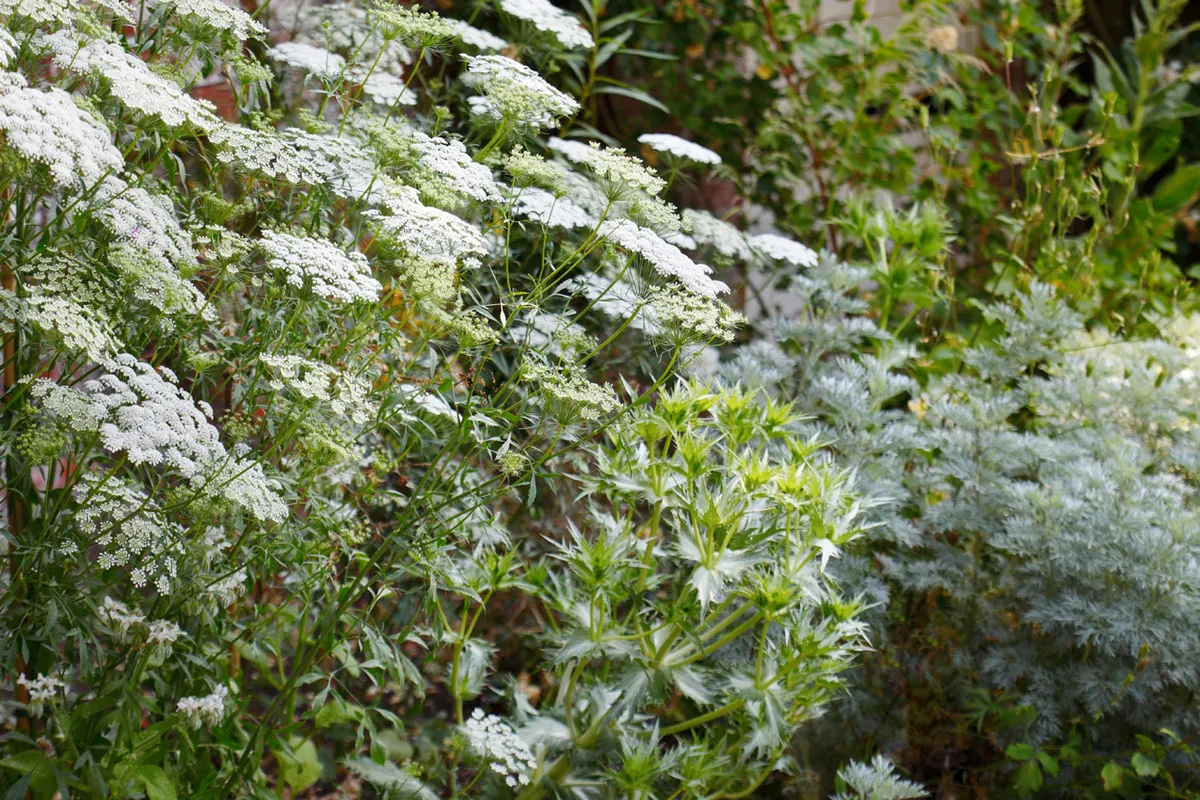
What to combine with white planting
Vita's initial, pre-war conception of the planting included touches of pink. And you will find, should you attempt to combine a ‘white’ lupin with a rose such as ‘Iceberg’ for instance, that the lupin has a yellowish tinge, which shows up harshly against the Persil-white of the rose. It is important to exclude all such yellow tints from a white garden. Pale ice-blue and the occasional pink are better admitted, as they will not muddy the predominant fresh tone of the garden. Preserving the atmosphere should be the primary concern.
Take a look at the Sissinghurst white garden
The slightest hint of senescence will quickly undermine the special atmosphere of a white garden. In the hurly-burly of a full-blooded flower border we might accept the July collapse of a plant such as Phlomis russeliana in return for the fine structural contribution of its seedheads; a white garden must remain fresh for as long as possible. It cannot be reconciled with the visible presence of decay. For this reason it is important to choose plants where the flowers and foliage age well. Some plants ‘self-clean’ and lose their petals discreetly; Orlaya grandiflora, Erigeron annuus, Browallia americana (there is a white form) and Cleome hassleriana ‘Helen Campbell’ are nice examples. A white buddleja or lilac, on the other hand, will not deadhead itself and will become an object of reproach until someone else performs the service for it.
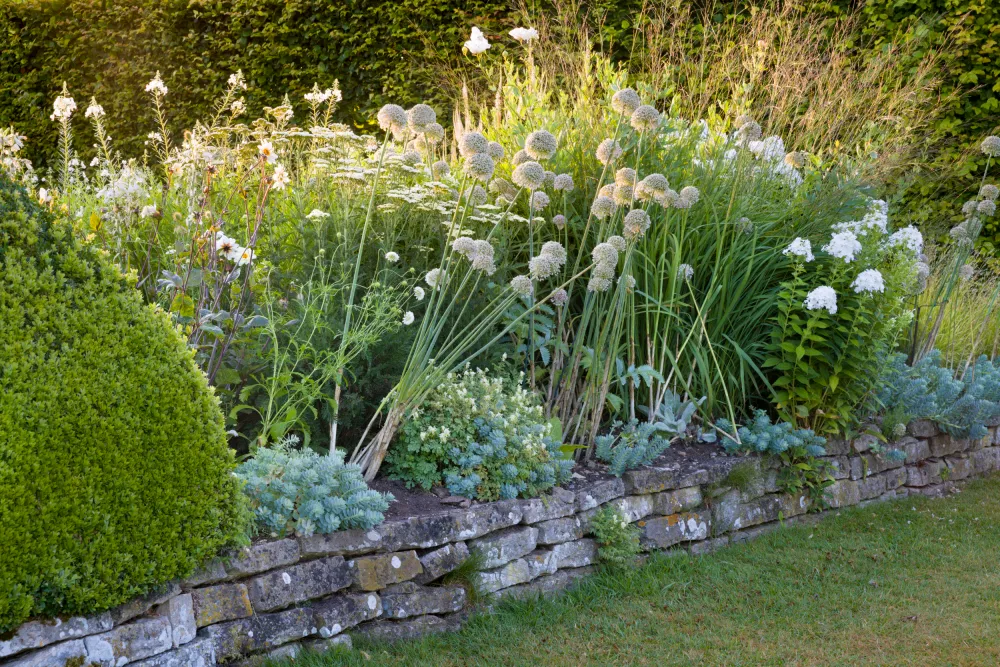
White garden plants
Plant form and texture become ever more important in a garden that excludes colour. Some plants are somewhat shapeless but will help to stitch your planting together in a kind of textural haze. Such a plant is Erigeron annuus, for summer, with forget-me-nots performing a similar function in spring. These plants are invaluable but it is also important to include a proportion of plants with a more definite shape or your planting will lack structure and interest.
Take for example, Ammi majus. With its horizontal plates, carried on an airy frame, it is indeed an elegant plant. But it will be even more pleasing if you can accentuate its umbelliferous form by positioning it so it contrasts with the vertical spires of a delphinium or an annual larkspur.
Globular alliums have a strong personality and offer a third contrasting shape. In this case you could use ‘White Cloud’ as it flowers later than most of its tribe and will coincide with the July flowering of the Ammi. Such effects, although they lend ‘structure’ to the planting, are temporary.
The basis of any good planting is its permanent framework of woody or evergreen perennials – these will anchor the ephemeral contributions of other plants and ensure the garden has a distinctive character.
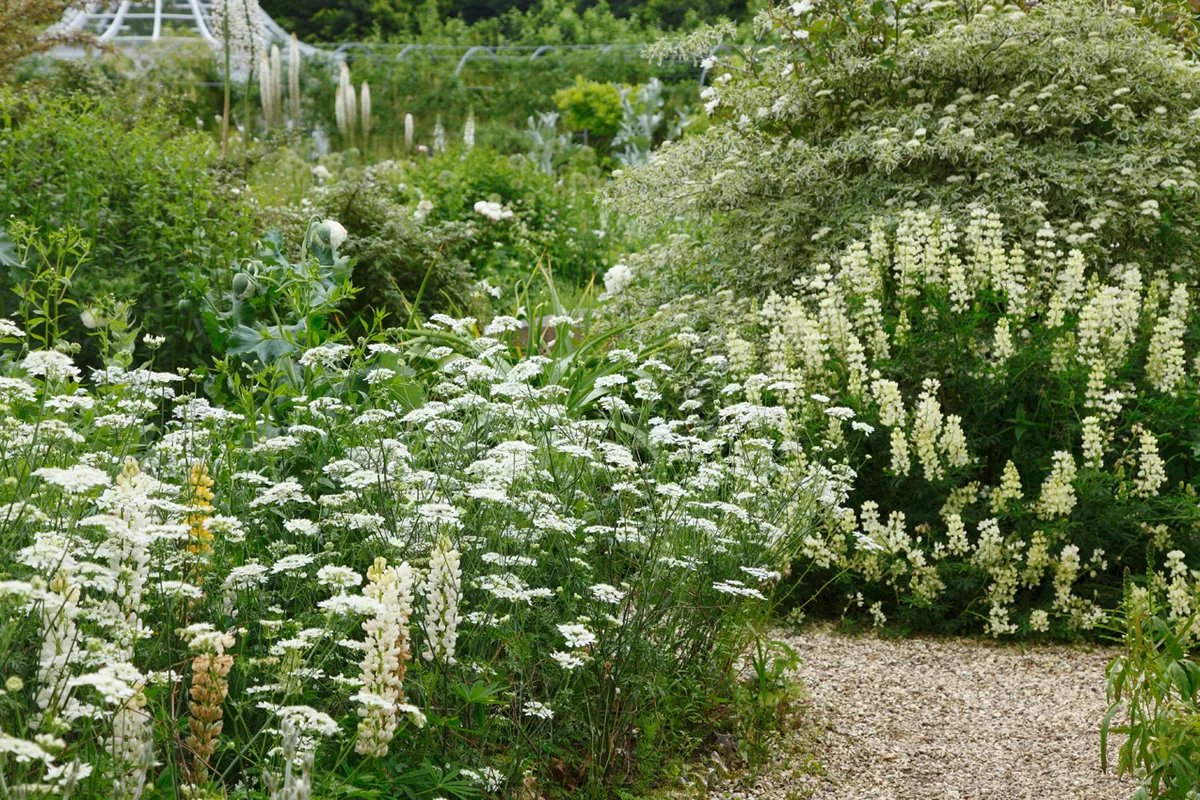
White garden permanent framework
A good ‘framework’ plant will have a strong and consistent presence throughout the growing season. For white gardens, a preponderance of silver, grey and glaucous foliage is a welcome enhancement. Even if you have room for just one small tree or shrub, be sure to include it, as it will help to cast a spell over your plot.
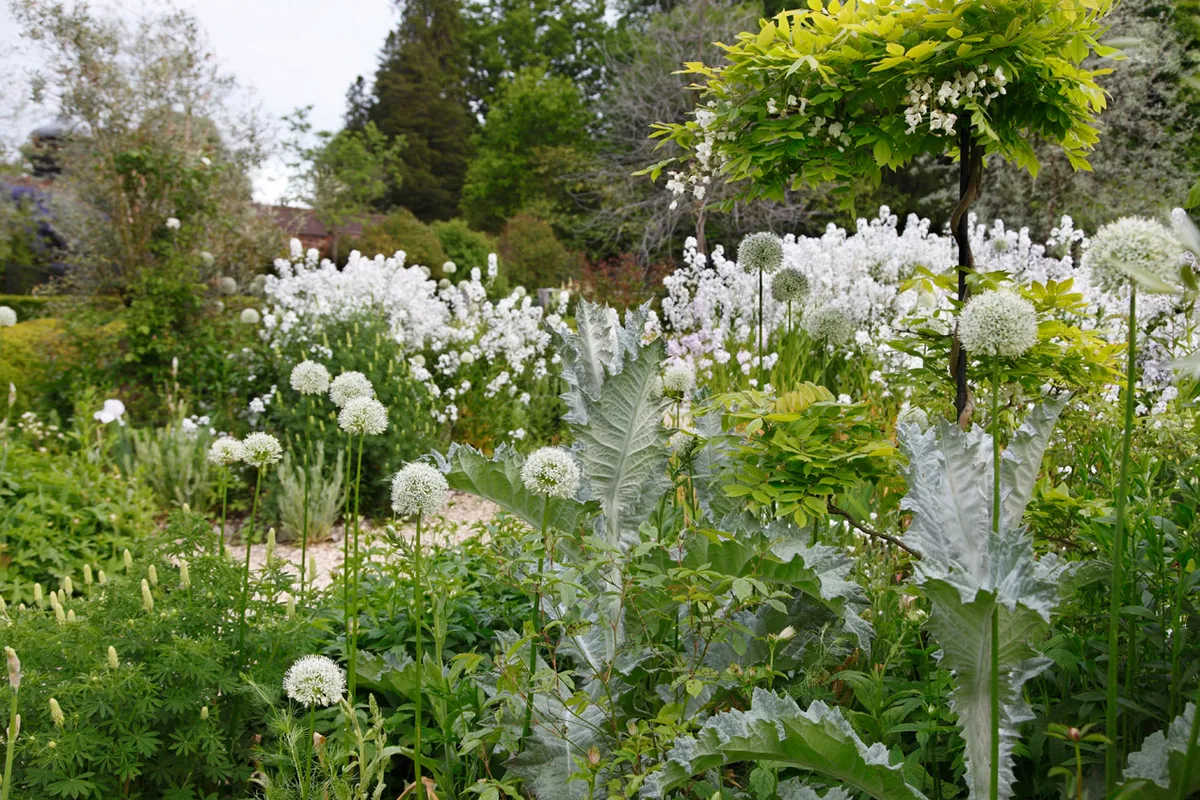
Remember that if you keep a shrub or tree ‘bare-legged’ by pruning, it needn’t obliterate too much of your planting space at ground level. Pyrus salicifolia is a small, solid tree of flashing silver foliage; it is very tough and has the added advantage for small gardens that it can be clipped successfully. Another good silver foliage shrub is Elaeagnus ‘Quicksilver’. It produces a clean crop of silver leaves annually and makes a particularly good host for Lathyrus latifolius ‘Albus’ or Clematis ‘Alba Luxurians’.
The silver stems of the bramble Rubus thibetanus are a great feature of winter and early spring, when ‘structure’ is hard to come by, and looks well partnered with snowdrops or Narcissus ‘Thalia’. It also has good soft silver leaves in growth, of an almost fern-like appearance. In midsummer, remove the previous season’s flowered wood right down to the ground, leaving the current season’s unbranched growth intact. This will ensure a steady succession of new growth and prevent the bramble taking over without ever leaving a void. Another silvery plant that responds well to hard pruning is the coyote willow, Salix exigua. It will tolerate annual pollarding, in spring, to a woody framework.
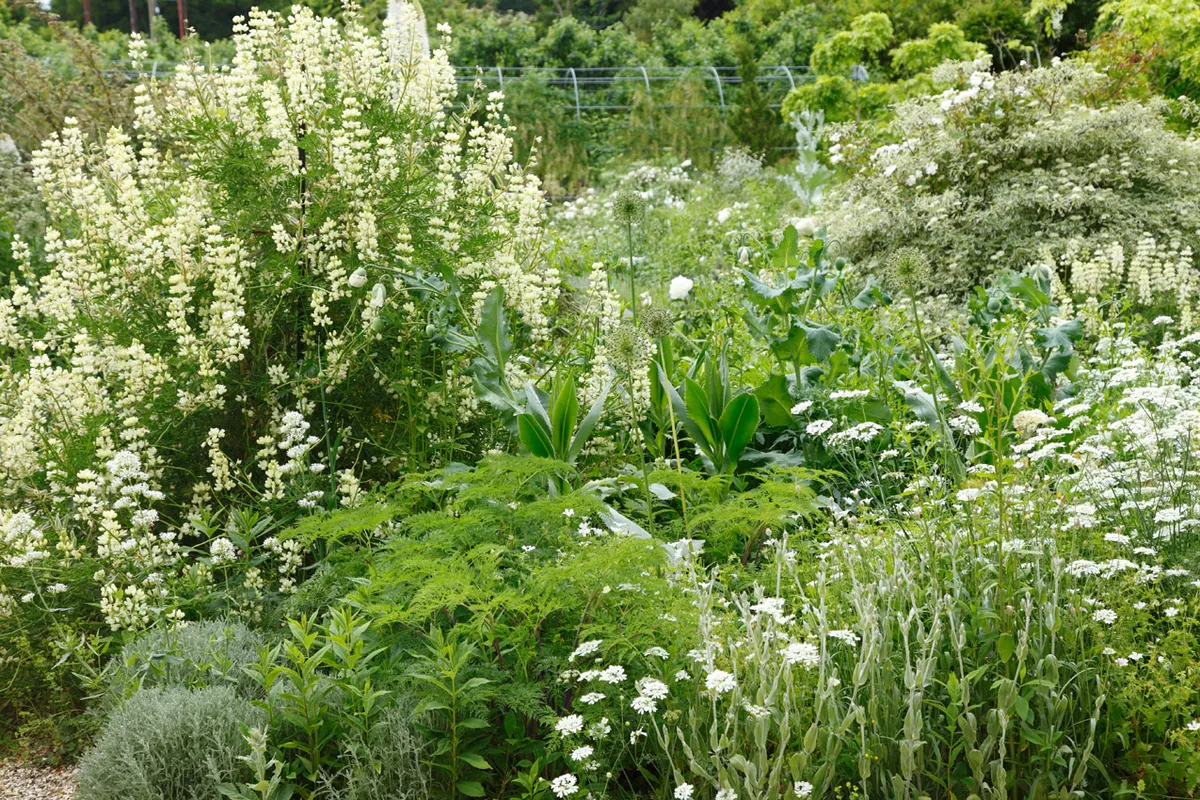
Leaves with strap-shaped foliage tend to stand out and create focal points that can be used effectively to punctuate displays of flimsier subjects. Astelia chathamica in its cultivar ‘Silver Spear’ is one of the finest examples with its dramatic sword shaped foliage. A couple of kniphofias are worth considering as structural foliage plants; their flower spikes can be removed. Kniphofia northiae is a lovely writhing mass of leaves that looks good with petunias or Stachys byzantina growing through it. A good form of Kniphofia caulescens will perform a similar function on a smaller scale and has slightly more silver in its leaf.
A good structural framework really anchors a white garden and becomes the backdrop against which the unfolding drama of the season can play out.
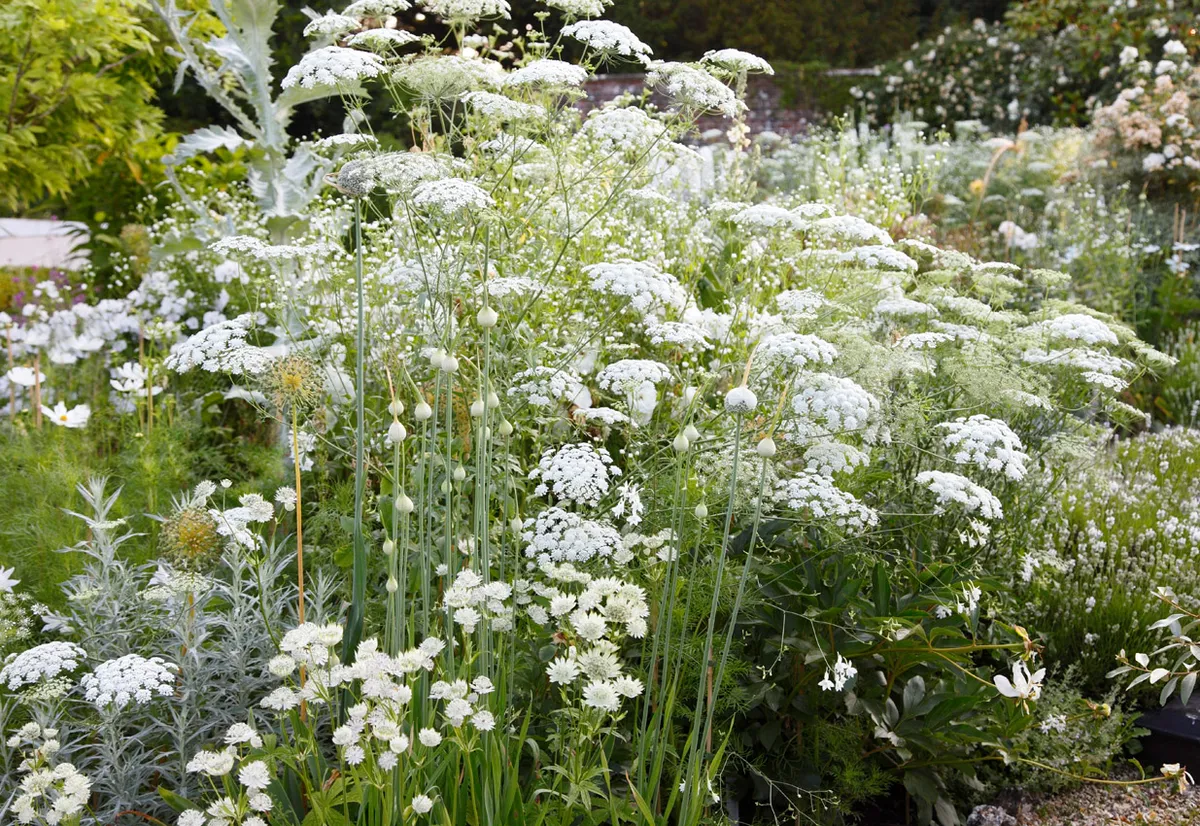
Here's our list of the best white flowers for your garden
White Gardens to visit
Hidcote Manor Gardens. Created at the same time as Sissinghurst, Hidcote has a White Garden set within a yew garden ‘room’. Website nationaltrust.org.uk/hidcote. Tel 01386 438333
Juust Wa’k Wou, the Netherlands. Mixed climbing roses cascade from trees and silver pears and shrubs add structure. Tel +31 117 401252
Le Jardin de l’Alchimiste, France. Drifts of iceberg roses and plumes of miscanthus in this white garden in Provence. Website jardin-alchimiste.com. Tel +33 4 90 90 67 67
The Barn. In designer Tom Stuart-Smith’s garden, which opens under the NGS, Hesperis matronalis alba and Eremurus ‘Joanna’, cast their spell. Website ngs.org.uk
Crathes Castle. Open throughout the year, but the double white borders are at their best in late June. Website nts.org.uk/Property/Crathes-Castle-Garden-and-Estate. Tel 08444 932166
Furzelea. Open for the NGS, the garden has a small space set aside for black and white plantings. Website ngs.org.uk. Tel 01245 225726
Sissinghurst Castle. Visit in early July when the Rosa mulliganii is at its magnificent height. Website nationaltrust.org.uk/sissinghurst-castle/ Tel 01580 710700
Malverleys. Beautiful White Garden hidden within a Victorian walled garden. Open Visiting by appointment only.
Don't miss our list of the best white flowers to plant